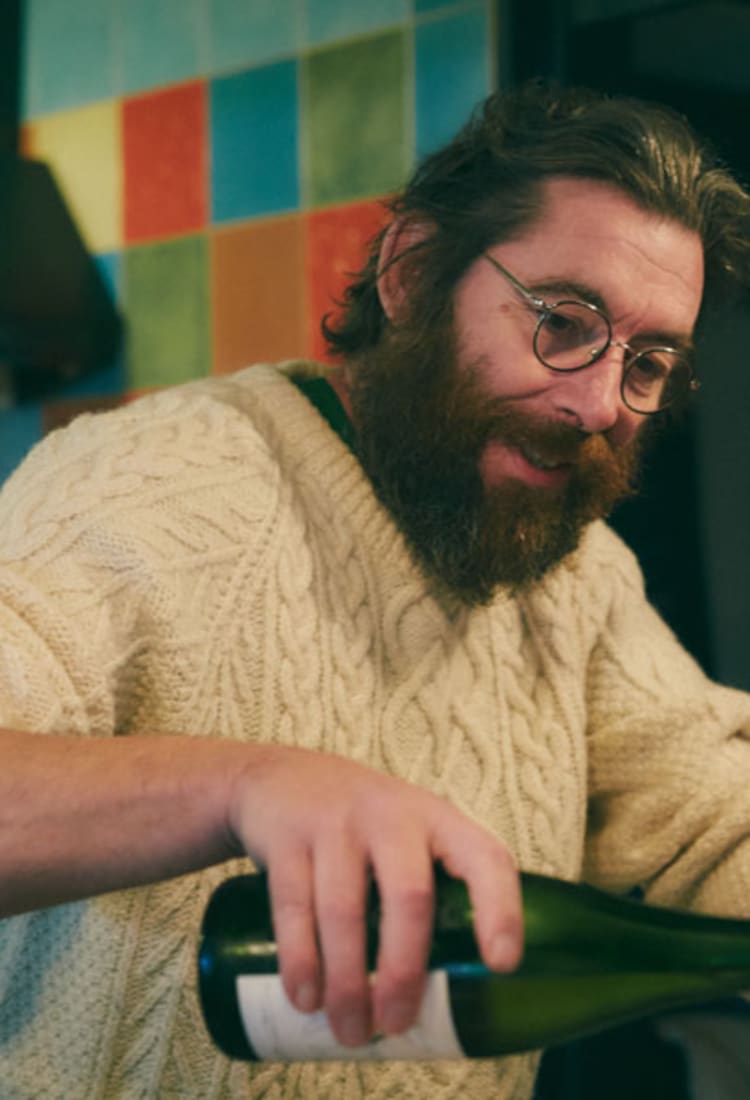
2020.03 Beautiful natural surroundings and farm-fresh food await you on Sado Island, the adopted home of a French winemaker
Sado is Japan’s second-largest island, located about three and a half hours from Tokyo—primarily via bullet train and ferry. Its beautiful natural surroundings are home to thriving fishing and agricultural industries. Jean-Marc Brignot is a Frenchman who moved to Sado Island in 2012. He runs the bistro La Barque de Dionysos. News of the internationally-known natural winemaker’s move to Sado Island came as a surprise to his fans around the world. So what kind of place is this island that it inspired Jean-Marc Brignot to put down roots here? We went to the source to find out more about what makes it so special.
Arriving in Sado Island in search of a life close to nature
Natural wines are considered difficult to make, since it’s not easy to ensure stable quality using organic grapes. Jean-Marc Brignot overcomes these challenges with precisely-timed harvests and advanced winemaking techniques. His wines are popular all over the world, and difficult to get a hold of.
Jean-Marc originally got into winemaking in the Jura region of France. Even wine aficionados acknowledge and appreciate the rarity and depth of flavor that wines made in Jura offer, but Jean-Marc felt the need to try winemaking in a completely new environment.
Jean-Marc: It’s important for winemakers to interact closely with nature and live in harmony with it. People in France are always giving you their opinions—telling you how things should be done or asking you why you’re not doing this or that, so it’s never relaxed. It made me want to get out of the country and try winemaking in a place that’s a little closer to nature.

Jean-Marc Brignot
The fact that his wife Satomi is Japanese was one of the reasons Jean-Marc decided to move to Sado, but it’s not like she had any particular ties to the island. They just happened to stumble across it while they were researching areas conducive to winemaking.
Jean-Marc: I grew up in a little coastal town in Normandy, so coming to Sado Island felt a bit like being transported back to my childhood.
I think it’s great for our son, who’s in elementary school now, to grow up in a little town like this. Being close to nature is far better than being in the city when it comes to being able to support yourself.
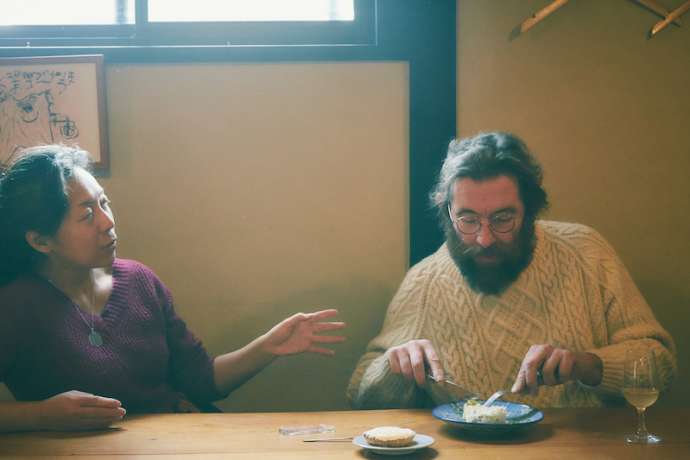
Jean-Marc Brignot (right) and his wife Satomi (left)
Jean-Marc: I was overcome by the power of the natural environment in Sado the moment I first arrived on the island. It’s beautiful, it’s vast… it speaks to you.
Because unspoiled nature is everywhere around the island, even the people who visit seem to be pulled away from their computer and phone screens and given an opportunity to reimagine themselves. A lot of them say that being on Sado Island reminds them of things they had long forgotten about.
The beautiful coastlines, the mountains covered in alpine plants, grasses, and wildflowers, the crested ibis swooping down into the rice paddies—Sado is scenic wherever you look.
Otowa Pond is a magical place with its floating island and more than two hundred plant species, and I love Futatsugame, which is along the beach and only accessible at low tide.
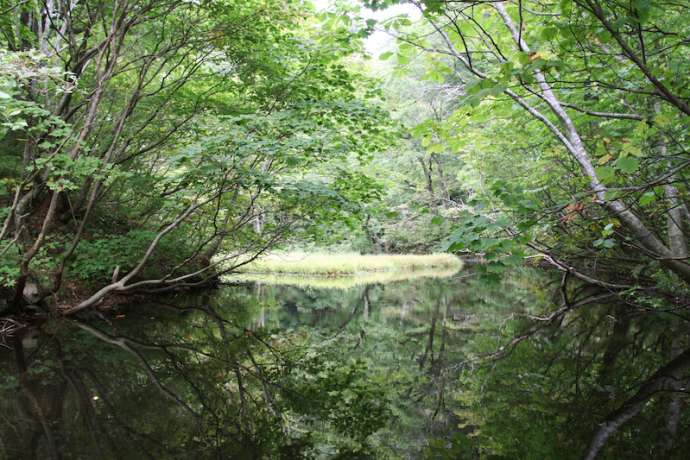
Otowa Pond Photo courtesy of the Sado Tourism Association

Futatsugame Photo courtesy of the Sado Tourism Association
Authentic traditional culture is alive and well on Sado Island
Jean Marc tells us that the traditional culture of Sado is just as captivating as the island’s natural beauty. About eight hundred years ago, it was a place people were exiled to, but because of that, aristocrats and intellectuals were among the people that arrived there. In addition, there was the culture of samurai who came in search of gold mixed with the culture of the traders (sailing merchant ships and fishing vessels) that were drawn to the island as well. The Sado culture that arose from this diversity is almost like a microcosm of Japan as a whole.
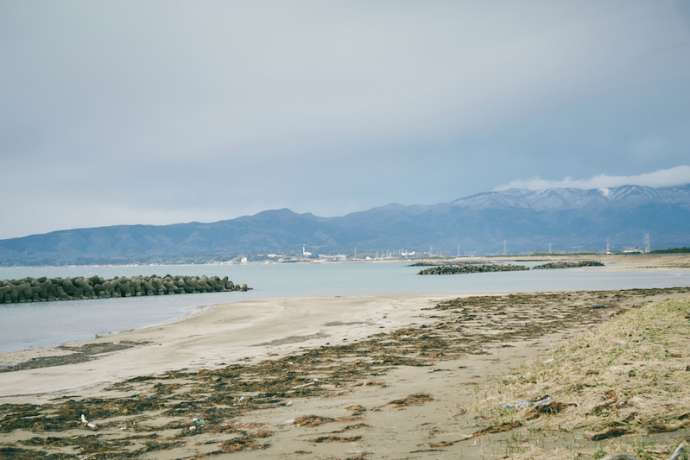

Jean-Marc: Sado’s history is fascinating to start, and many authentic pieces of its traditional culture remain. The festivals, for example, are held for the sake of the villagers themselves—they’re not packaged as a tourist attraction for the outside.
One of the most interesting spots that Jean-Marc told us about was the Pear Tree Jizo. Jizo are Buddhist statues that are a common sight along roadsides and at temples, and therefore quite familiar to the Japanese. Islanders who come to pray for healing for children put tiny Jizo statues at the Pear Tree Jizo altar, and they say that the number of them has now increased into the thousands.
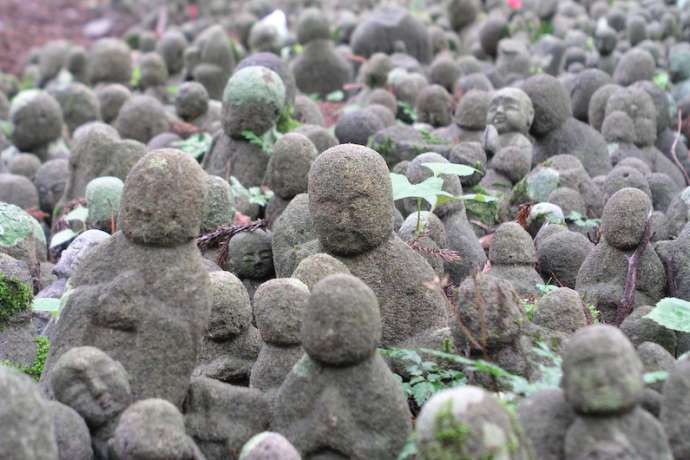
Pear Tree Jizo Photo courtesy of the Sado Tourism Association
Jean-Marc: There are many historical structures that remain on Sado Island. They say that temples like Seisui-ji and Chokoku-ji were actually built by exiles in imitation of the temples of the old capitals of Kyoto and Nara.
Sado is also famous for its lively traditional Noh performances, with a third of Japan’s Noh stages all concentrated on the island. That’s another wonderful thing about this place.
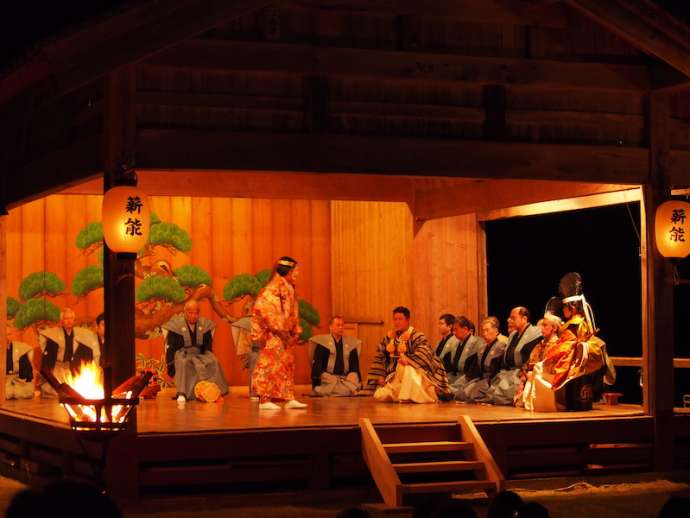
Noh stage Photo courtesy of the Sado Tourism Association
Make your trip to Sado Island even more fun by enjoying the food, which makes the most of the bounty of the land
For most people, enjoying good food is a big part of the travel experience. The soil on Sado Island is so fertile that people say any fruit will grow there—and this is one of the reasons that winemaker Jean-Marc decided to move there. And because warm and cold currents intersect off the coast, it’s a perfect fishing area where fish come in from both the north and the south. It’s also part of Niigata Prefecture, Japan’s number-one rice producer, making it one of the top three production areas in the country.
“To me, a place is only half as good if the food’s bad,” Jean-Marc told us. Almost everything he serves at his bistro, La Barque de Dionysos, is made using ingredients sourced from Sado Island.
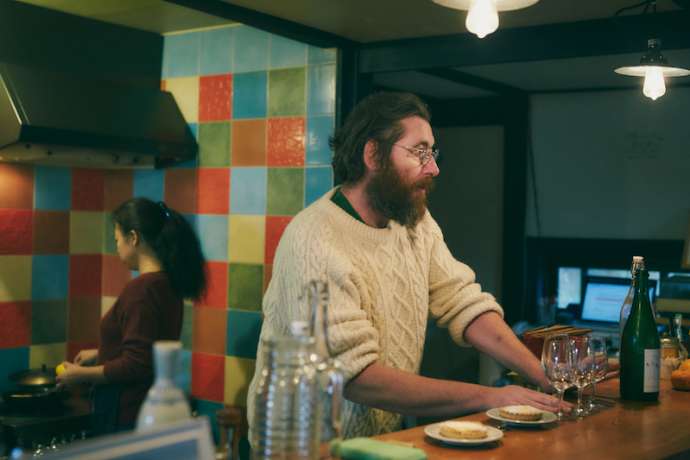
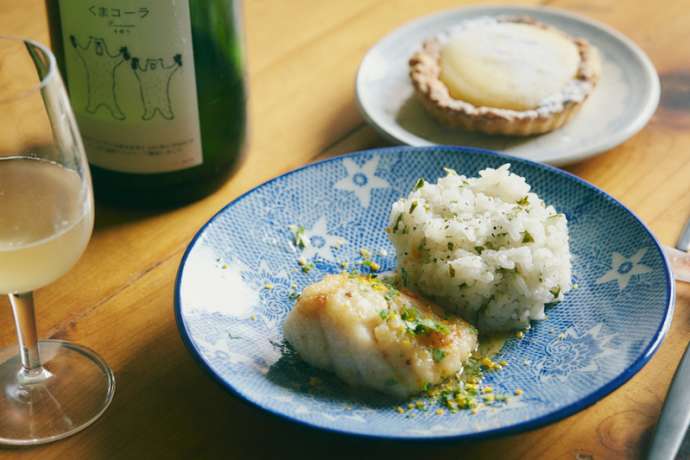
A dish at La Barque de Dionysos made with white fish caught off the island
He recommended that we try a soba restaurant called Mozem, which is located in a refurbished old Japanese farmhouse. Most of their dishes are made with fish caught off the coast of Sado Island. People in Sado traditionally eat bukkake soba, and Mozem is famous for their version of it, in which the dashi broth made with a flying fish is poured on the noodles.
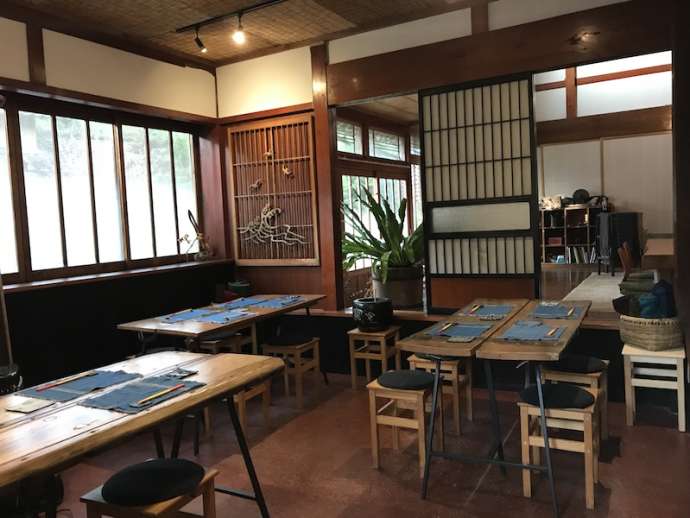
The Mozem soba shop
Jean-Marc: Kazuo Saito, who owns Mozem, is a Sado native who trained at a soba shop in Tokyo before coming back to the island. He uses traditional Sado recipes handed down through the generations and insists on Sado-sourced ingredients.
It’s a bit like the popular Copenhagen restaurant Noma, in that he offers unique dishes that are deeply tied to the local food and culture. I love the kurumi soba, which is served with walnuts for grinding.

Jean-Marc: I also recommend Fruits & Cafe Saito, which is famous for its dessert of shaved frozen strawberries served with condensed milk, and Sushi Kaku, which serves fish caught by the local fisherman that day. If you’re looking for an authentic French course meal made with fresh local vegetables and so on, you can get it at SEISUKE Next Door. There are just so many restaurants around here that make use of local Sado ingredients.
Life on the island is fun in every season thanks to its natural wonders—whether it’s diving in summer or fishing in the winter
Jean-Marc: It’s likely that the people of Sato have never wanted for food—and I have a feeling that may be why they are so laid-back here. They also have a culture of welcoming people who come from off the island, making them friendly towards people who are a bit different from them.
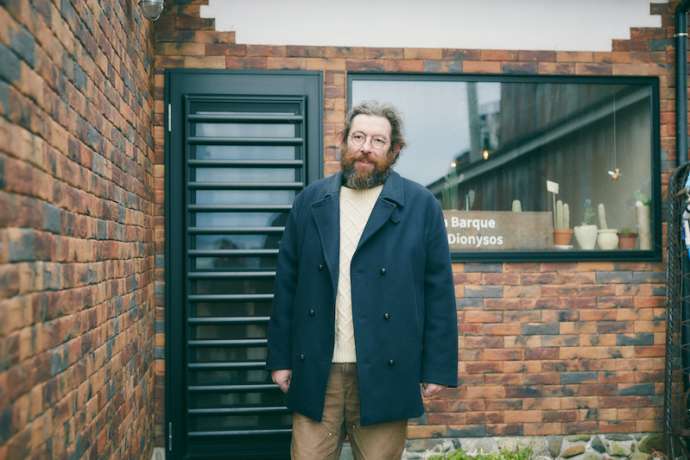
Natural beauty, traditional culture, food… Sado Island is full of wonderful things, which you can experience in different ways depending on the season. Jean-Marc said that that’s why he never tires of living here. Before we left, we asked him to give us some advice on how visitors could best enjoy the island.
Jean-Marc: There are different ways to have fun here in every season. There are all kinds of things to do in spring, summer, and fall—like fishing, diving, cycling, and so on. Winters are cold and sometimes the boats don’t go out when the seas are rough, but the seafood is delicious and there aren’t many tourists, so you can really relax and enjoy yourself.
It is physically tiring just to get here by ferry, so ideally your travel plans will allow you to just kick back and take it easy at your inn or hotel on the day you arrive, rather than trying to go out and do things. There are so many things to see and do here that you’ll want to spend at least two nights on the island.
There’s a longstanding Japanese inn called the Itouya Ryokan near our bistro, and it’s great because it makes you feel like you’re going back in time to old Japan. Meanwhile, you can choose any level of accommodations to suit your needs—from the Yahatakan (where the emperor once stayed) to any number of affordable inns that have recently popped up in repurposed Japanese farmhouses.
There’s not a lot of public transportation here, so it’s more convenient to get around by rental car when you’re on the island.
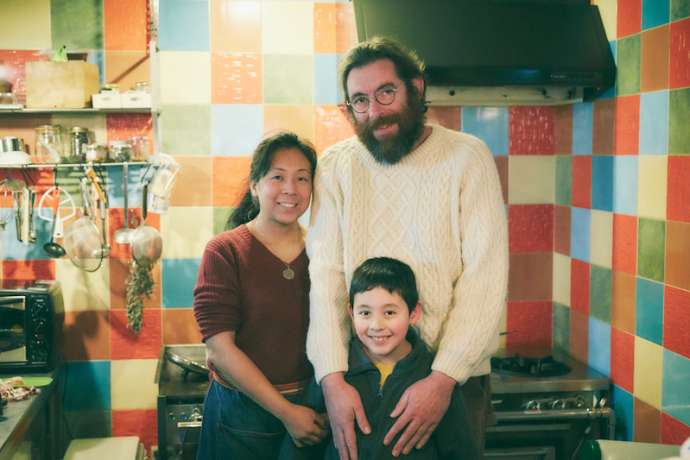
Sado island | Japan Travel | JNTO |
| WEB:https://www.japan.travel/en/destinations/hokuriku-shinetsu/niigata/sado-island/ |
Sado Tourism Association |
| WEB:https://www.visitsado.com/en/ |
La Barque de Dionysos |
|
Address: 327-1 Manoshin-machi, Sado-shi, Niigata Prefecture |
Soba Mozem |
|
Address: Niibo-tanosawa, Sado-shi, Niigata Prefecture |
Fruits & Café Saito |
|
Address: 667-1 Niibo-aoki, Sado-shi, Niigata Prefecture |
Sushi Kaku |
| Address: 1216-6 Inakujira, Sado-shi, Niigata Prefecture |
SEISUKE Next Door |
|
Address: On the Bi-ichi Complex 1F 207-76 Kawaharada Suwa-machi, Sado-shi, Niigata Prefecture |
Itouya Ryokan |
|
Address: 278 Mano Shin-machi, Sado-shi, Niigata Prefecture |
Yahatakan |
|
Address: 2043 Yahata, Sado-shi, Niigata Prefecture |




















































